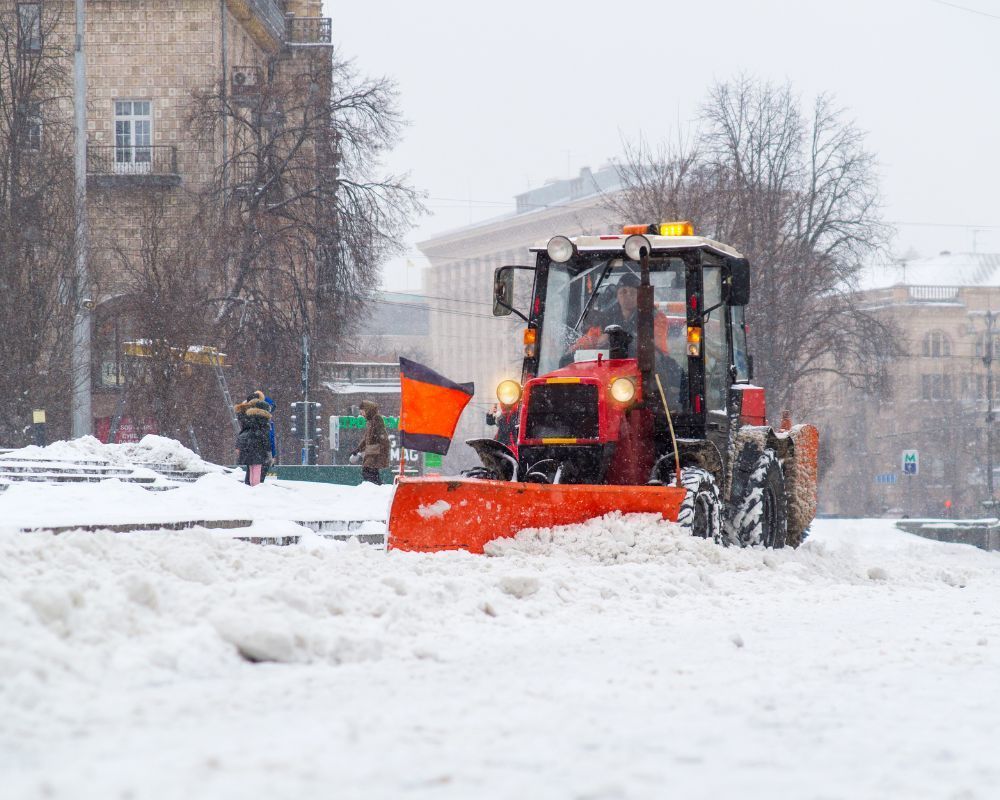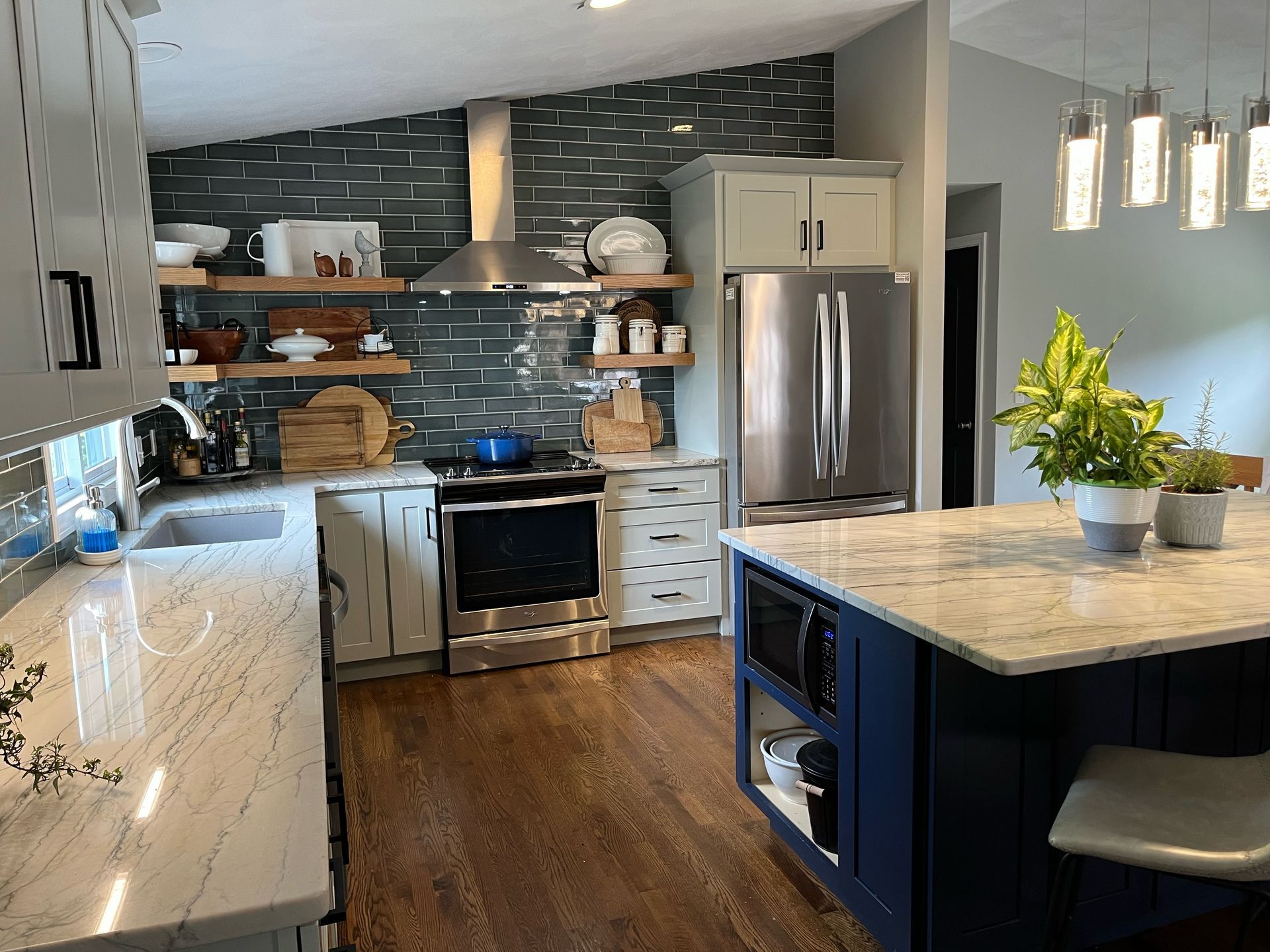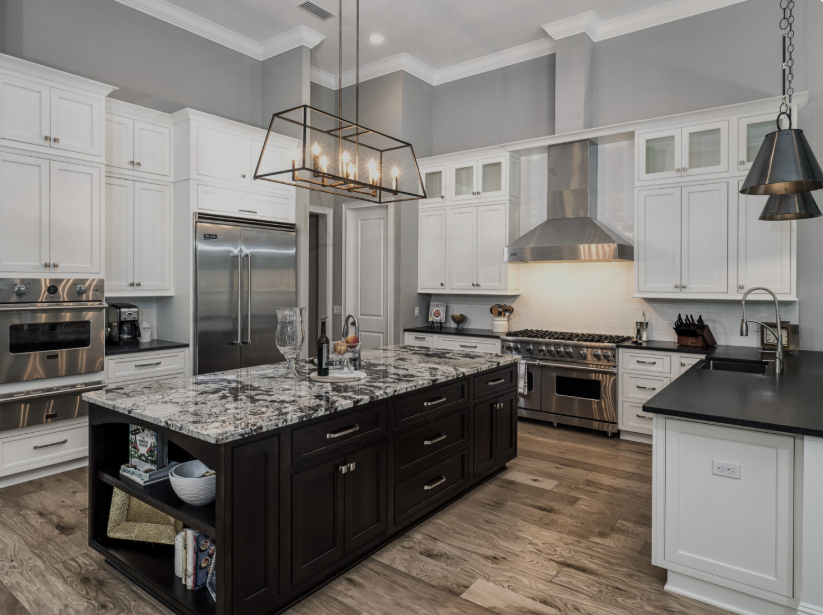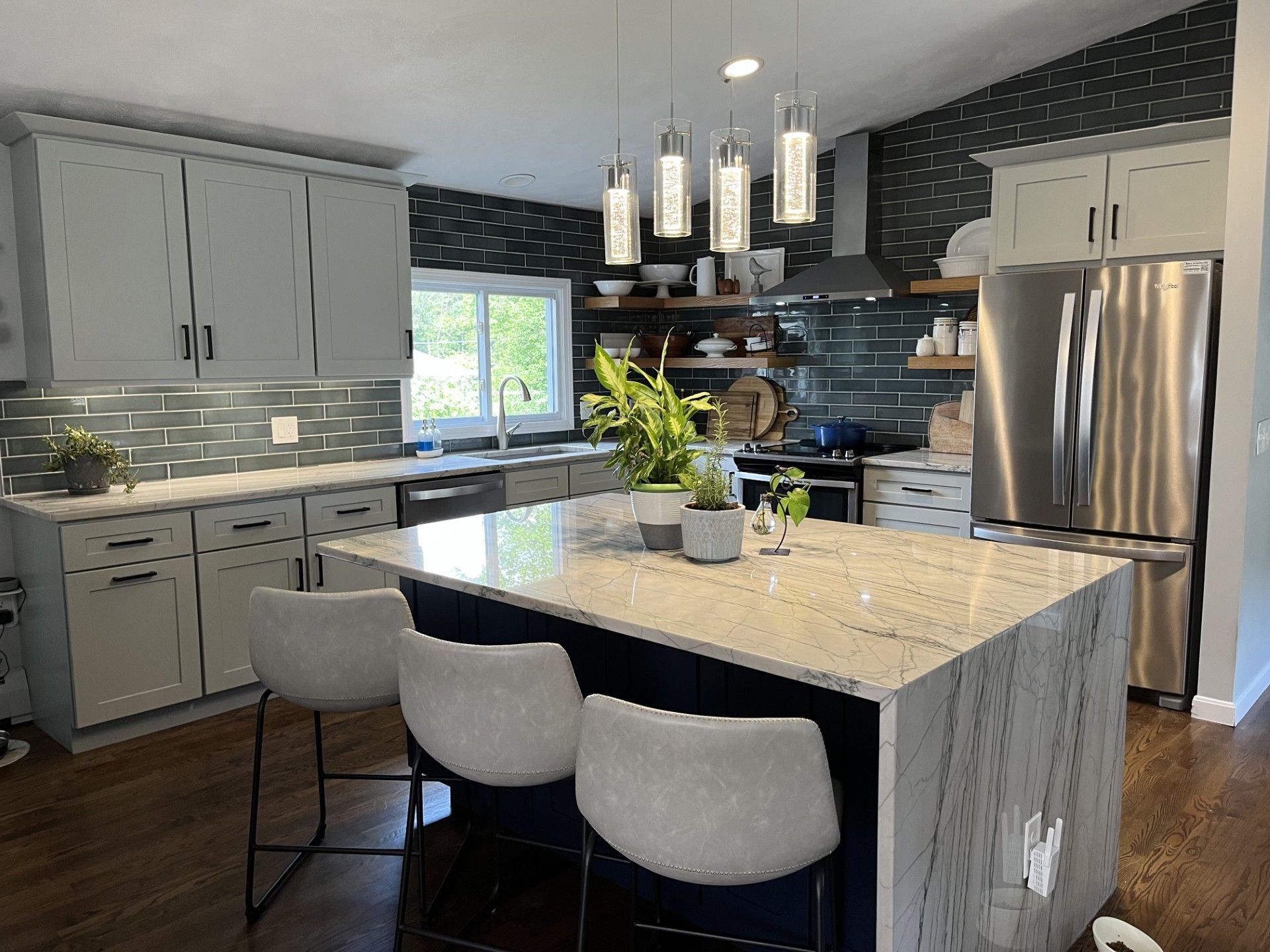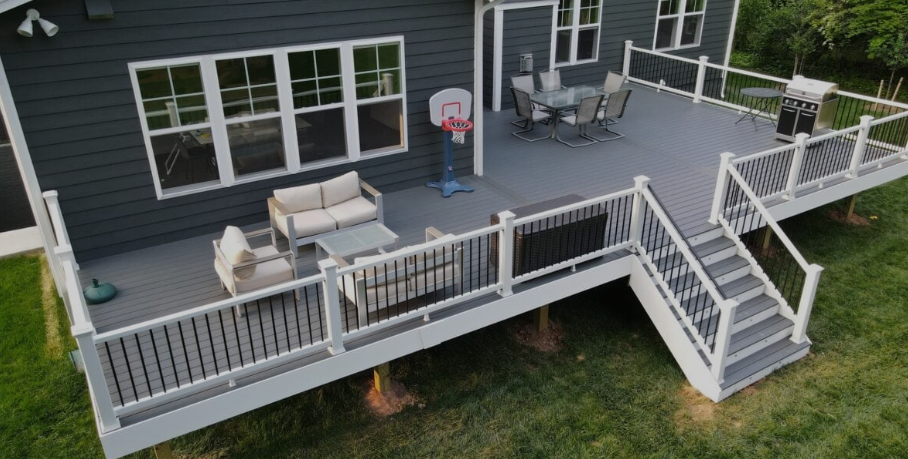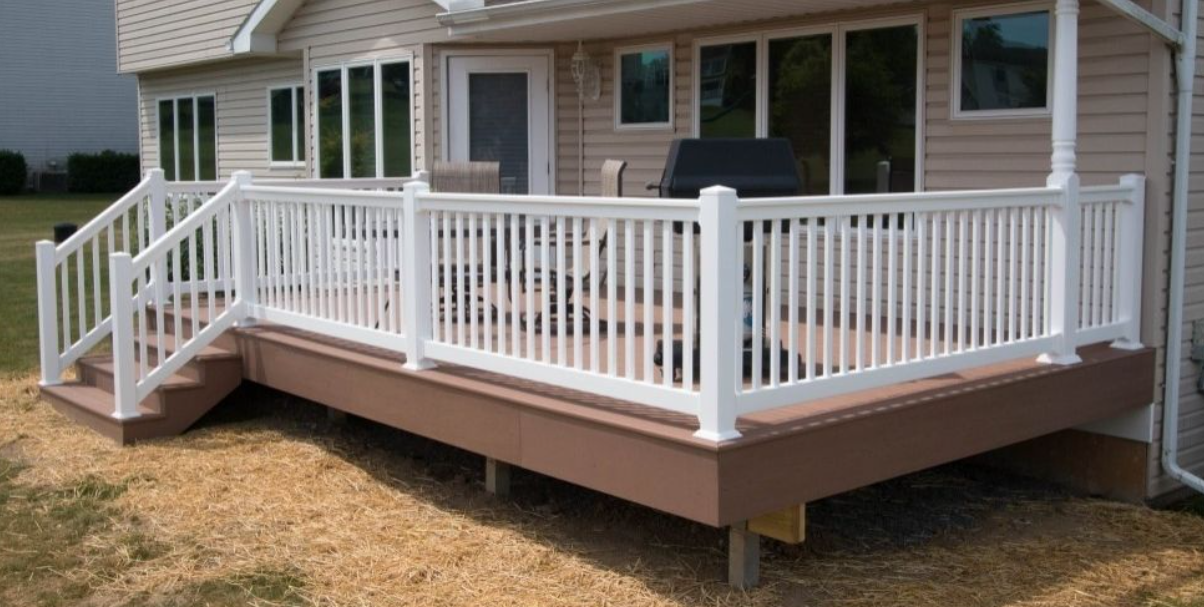What Type of Gravel Base Is Best for Patios in Rhode Island?
3/4-inch crushed stone (also called #57 stone) is the best gravel base for patios in Rhode Island. This angular, well-graded aggregate provides optimal drainage, compaction, and stability for the Ocean State's challenging soil conditions and climate.
Recommended Rhode Island Patio Base System:
- Bottom Layer: 4-6 inches of 3/4-inch crushed stone (#57)
- Middle Layer: 2-3 inches of 3/8-inch crushed stone (#8)
- Top Layer: 1-2 inches of stone dust or concrete sand
- Total Depth: 6-10 inches depending on soil conditions
This multi-layer approach handles Rhode Island's clay soils, freeze-thaw cycles, and high precipitation levels while providing long-lasting patio stability.
Why Gravel Base Selection Matters in Rhode Island
Rhode Island's Unique Soil Challenges
Rhode Island's geological composition creates specific requirements for patio base materials that differ from other regions:
Clay-Heavy Soils: Much of Rhode Island, particularly in Providence, Warwick, and Cranston, sits on dense clay soils that retain water and expand when wet. Poor drainage leads to frost heave and patio failure.
Glacial Till: Legacy glacial deposits throughout the state create mixed soil conditions with varying drainage properties, requiring adaptable base systems.
High Water Table: Coastal areas and low-lying regions often have elevated groundwater levels, making proper drainage critical for patio longevity.
Freeze-Thaw Cycles: Rhode Island's winter climate regularly fluctuates around freezing, causing soil expansion and contraction that can destroy inadequate patio bases.
Consequences of Poor Base Selection
Using the wrong gravel base in Rhode Island can lead to:
- Patio settling and sinking during spring thaw
- Uneven surfaces and trip hazards
- Water pooling and drainage problems
- Weed growth through inadequate base layers
- Premature paver or stone failure requiring expensive repairs
Best Gravel Types for Rhode Island Patio Bases
Primary Base Layer: 3/4-Inch Crushed Stone (#57 Stone)
Why #57 Stone Works Best in Rhode Island:
- Angular shape provides excellent interlocking and compaction
- Good drainage prevents water retention that causes frost heave
- Readily available from local Rhode Island quarries
- Cost-effective for large base areas
- Proven performance in New England climate conditions
Specifications:
- Size: 3/4-inch to 1-inch diameter
- Shape: Angular, crushed (not rounded river rock)
- Compaction: Achieves 95%+ density when properly installed
- Depth: 4-6 inches for most Rhode Island applications
Secondary Base Layer: 3/8-Inch Crushed Stone (#8 Stone)
Purpose and Benefits:
- Transition layer between coarse base and fine bedding
- Improved surface smoothness for final patio installation
- Enhanced compaction fills voids in base layer
- Better load distribution across the foundation
Installation Notes:
- Apply 2-3 inches over compacted #57 stone
- Compact thoroughly with plate tamper
- Screen to achieve uniform surface
Bedding Layer Options for Rhode Island
Stone Dust (Quarry Dust)
Best for: Natural stone patios, flagstone, irregular pavers
Rhode Island Advantages:
- Excellent compaction in high-humidity conditions
- Self-binding properties create stable surface
- Local availability from RI quarries reduces costs
- Weather resistance handles freeze-thaw cycles well
Concrete Sand
Best for: Uniform pavers, precise installations
Rhode Island Advantages:
- Consistent particle size ensures level surfaces
- Good drainage prevents water retention
- Easy to work with during installation
- Widely available throughout the state
Polymeric Sand
Best for: Premium installations, weed prevention
Rhode Island Considerations:
- Excellent weed prevention important in humid climate
- Joint stabilization resists washout from heavy rains
- Higher cost but reduced maintenance needs
- Installation sensitivity to moisture conditions
Gravel to Avoid for Rhode Island Patios
Rounded River Rock or Pea Gravel
Problems in Rhode Island:
- Poor compaction due to rounded shape
- Shifting and movement under load
- Inadequate drainage can trap water
- Not suitable for structural base applications
Crushed Concrete
Limitations:
- Variable quality depending on source
- Potential contamination with debris
- Inconsistent compaction properties
- May not meet local building codes
Bank Run Gravel
Issues for RI Climate:
- High clay content retains moisture
- Poor drainage characteristics
- Inconsistent particle size affects stability
- Susceptible to frost heave in Rhode Island winters
Installation Depth Requirements for Rhode Island
Standard Residential Patios
Foot Traffic Only:
- Base Layer: 4 inches of #57 crushed stone
- Intermediate Layer: 2 inches of #8 crushed stone
- Bedding Layer: 1 inch of stone dust or sand
- Total Depth: 7 inches
Heavy-Use Patios
Outdoor Kitchens, Fire Features:
- Base Layer: 6 inches of #57 crushed stone
- Intermediate Layer: 3 inches of #8 crushed stone
- Bedding Layer: 2 inches of stone dust
- Total Depth: 11 inches
Clay Soil Conditions
Common in Providence, Kent Counties:
- Additional base depth: Add 2-4 inches to standard recommendations
- Improved drainage: Consider geotextile fabric under base
- Soil amendment: May require clay removal and replacement
Coastal Areas
High Water Table Locations:
- Enhanced drainage: Minimum 8-inch total base depth
- Drainage integration: Connect to existing drainage systems
- Salt considerations: Use marine-grade materials where applicable
Local Rhode Island Gravel Sources and Considerations
Major Rhode Island Quarries and Suppliers
Northern Rhode Island:
- Aggregate Industries (North Smithfield): High-quality crushed stone
- Independent Materials (Burrillville): Local #57 and #8 stone
- Various suppliers throughout Providence County
Southern Rhode Island:
- Coastal quarries serving Washington County
- Local suppliers in Westerly and South County areas
- Marine aggregate sources for coastal projects
Delivery and Logistics Considerations
Seasonal Availability: Spring demand can affect pricing and availability across Rhode Island. Plan installations during off-peak periods when possible.
Transportation Costs: Local sourcing reduces delivery costs, especially important for large patio projects in remote areas of the state.
Minimum Orders: Most suppliers require minimum orders (typically 5-10 tons) which affects project planning for smaller patios.
Step-by-Step Installation Process
Site Preparation
- Excavate to proper depth (base + bedding + patio material thickness)
- Check for utilities - Rhode Island requires Dig Safe calls
- Address drainage - slope away from structures at 1/4 inch per foot
- Compact subgrade to prevent future settling
Base Installation
- Install geotextile fabric if recommended for soil conditions
- Place #57 crushed stone in 2-inch lifts
- Compact each lift with plate tamper or roller
- Check depth and grade throughout installation
- Repeat for #8 stone layer
Bedding Layer Installation
- Spread bedding material evenly across base
- Screen to proper thickness using guides
- Avoid over-compaction of bedding layer
- Install patio materials immediately to prevent contamination
Maintenance and Long-Term Performance
Annual Inspection Checklist
Spring Assessment (Critical in Rhode Island):
- Check for settling or low spots after winter freeze-thaw
- Inspect drainage and clear any blockages
- Look for signs of base failure or movement
- Address minor issues before they become major problems
Fall Preparation:
- Ensure proper drainage before winter
- Remove debris that could trap water
- Check joint sand levels and replenish if needed
Signs of Base Problems
Immediate Action Required:
- Standing water on patio surface after rain
- Sinking or settling pavers or stones
- Uneven surfaces creating trip hazards
- Weed growth indicating base deterioration
Long-Term Performance Expectations
Properly installed gravel base systems in Rhode Island should provide:
- 20+ years of stable patio performance
- Minimal settling with proper compaction
- Excellent drainage preventing frost damage
- Easy maintenance with occasional joint sand replenishment
Cost Analysis for Rhode Island Homeowners
Material Costs (Per Ton, Delivered)
#57 Crushed Stone: $25-35 per ton
#8 Crushed Stone: $28-38 per ton
Stone Dust: $30-40 per ton
Concrete Sand: $35-45 per ton
Coverage Calculations
#57 Stone (4-inch depth): 1 ton covers approximately 80 square feet
#8 Stone (2-inch depth): 1 ton covers approximately 160 square feet
Bedding Material (1-inch depth): 1 ton covers approximately 320 square feet
Total Project Cost Considerations
DIY Installation: Material costs plus tool rental ($200-400)
Professional Installation: $8-15 per square foot including materials and labor
Long-term Value: Proper base installation prevents costly repairs and extends patio life
Rhode Island Building Code and Permit Requirements
Municipal Variations
Providence: Requires permits for patios over 200 square feet
Newport: Historic district approvals may be required
Warwick: Coastal zone considerations for waterfront properties
Cranston: Standard residential requirements, special attention to drainage
Professional Installation Standards
Compaction Requirements: Minimum 95% standard proctor density
Drainage Standards: Positive drainage away from structures
Material Specifications: Must meet ASTM standards for aggregate
Installation Documentation: May be required for warranty purposes
Environmental Considerations
Sustainable Practices
Local Sourcing: Reduces transportation environmental impact
Permeable Systems: Consider pervious base designs for environmental benefits
Recycled Materials: Some suppliers offer recycled concrete aggregate options
Stormwater Management: Proper drainage protects local waterways
Rhode Island Environmental Regulations
Stormwater Permits: May be required for large residential projects
Coastal Zone Management: Additional requirements near water bodies
Wetlands Protection: Setback requirements from sensitive areas
Common Installation Mistakes in Rhode Island
Inadequate Depth
Problem: Skimping on base depth to save money
Rhode Island Impact: Frost heave and settling in clay soils
Solution: Follow recommended depths for local conditions
Poor Compaction
Problem: Insufficient compaction of base layers
Rhode Island Impact: Settlement during spring thaw cycles
Solution: Proper equipment and technique for each lift
Drainage Neglect
Problem: Ignoring drainage requirements
Rhode Island Impact: Water retention leads to frost damage
Solution: Plan drainage systems before installation begins
Wrong Material Selection
Problem: Using inappropriate aggregate types
Rhode Island Impact: Base failure in challenging climate conditions
Solution: Specify proper materials for local conditions
Our team understands the specific requirements for different areas across Rhode Island, from Providence's urban clay soils to coastal communities' drainage challenges. We use only the highest quality locally-sourced materials and proven installation techniques to ensure your patio base will provide decades of reliable performance.
Contact us today for expert guidance on your Rhode Island patio project and professional installation that's built to last.
